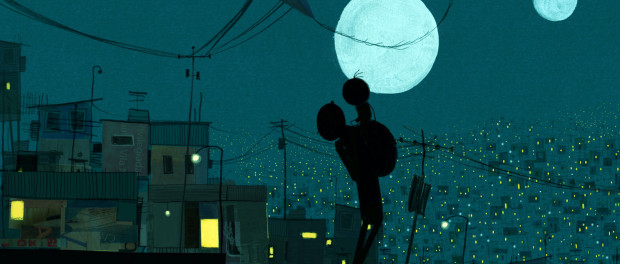Boy and the World: A Poetic Critique
The creative genius of writer and director Alê Abreu, whose film Boy and the World (original title O Menino e o Mundo) was nominated for Best Animated Feature at the Oscars this year, brings to us the colourful rural life of Cuca in a portrait of a boy and his imagination. As the writer/director animates frame after frame, he brings to life the wonders that are Cuca’s imagination and the world he inhabits. Rich in dollops of colour and sublime movement, and complemented by some great music, Boy and the World is a poetic critique of the world we have created, the tumultuous nature of our existence and this divide between the simple pace of existence and our created monstrous chaos.
Cuca is a little boy who lives his merry life in the country. He is surrounded by the chirping of the birds, the whistling trees, the larks that sing in the distance and the goings on of the peace and tranquility that a simple life brings. This picturesque representation of Cuca’s world is both endearing and idyllic. For the first bit of the film we follow Cuca around as he runs through the meadows, the ravines and the endless nature that surrounds him. The animation is brilliantly detailed and visually stunning, one of the best I have seen in the recent past. All of this is not the entire story and soon his father must leave for the big city in search of work. Cuca starts to feel his father’s absence and decides that he must follow in his footsteps, quite literally.
Cuca sets out in search of his father and through his journey travels between cotton fields, endless tracks of land that line the country. He encounters hundreds of cotton pickers working the fields, toiling to sustain the agrarian strength of the land. Further along Cuca’s journey, he begins encountering signs of industrialization, transportation of goods through the countryside into the city, workers working, and large shipping centres moving goods for commerce. This slowly and steadily growing industrialized portion of his country is starkly different from the lush green of his village, yet Cuca pushes on in search of his father.

Boy and the World
As his image of the world begins to change around him, his encounters become real and sometimes even disorienting, thus completely transforming his worldview. As Cuca starts to observe the truth that exists outside the confines of his secluded village, the films changes focus.
Towards the end of the film, some live action footage is introduced to drive home the message of the perils of industrialization and the exploitation of nature and man as we continue to feed human greed. Boy and the World is a superbly crafted, simply told story of a dream world tarnished by human behaviour and unfettered action. The use of the young boy is the perfect metaphor of how innocence is smeared by the realities of self-centred human existence. There is some gibberish dialogue, but the images do all the talking and no words seem necessary.
Boy and the World is now playing at Cinema du Parc.






